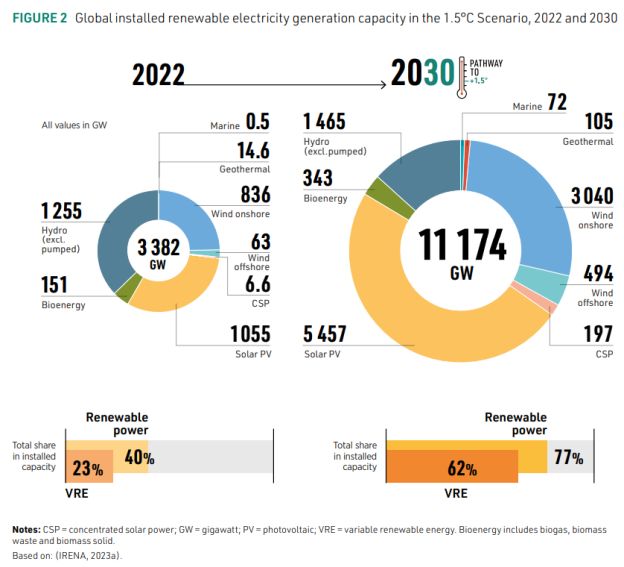The 2024 UN Climate Change Conference, also known as COP28, takes place from 30 November to 12 December 2023 in the UAE.
What is a COP? To understand this, we need to look back in time. In 1990, negotiations began on what eventually became the UN Framework Convention on Climate Change (UNFCCC). The Convention was adopted in 1992, and opened for signature at the UN Conference on Environment and Development in Rio de Janeiro, Brazil, now known as the Rio Earth Summit. The Convention currently has 198 members, or Parties, and each year a Conference of the Parties (COP) is held.
COP1 took place in Berlin in 1995. At COP3, the Kyoto Protocol was adopted by 192 Parties, and the Paris Agreement was adopted by 196 Parties at COP21 in Paris. COP26 was held in Glasgow in 2021, and led to the signing of the Glasgow Climate Pact. The Pact is a package of decisions, including a collective agreement by Parties to work to limit the rise in the global average temperature to 1.5 °C.
The target of 1.5 °C was set as part of the Paris Agreement, and COP28 marks the year of the first Global Stocktake, in which the world reflects on its progress. The Global Stocktake suggests that we need to cut 22 gigatonnes of greenhouse gases in the next 7 years in order to keep 1.5°C within reach.
A new report entitled "Tripling Renewable Power and Doubling Energy Efficiency by 2030: Crucial Steps Towards 1.5 °C", by the COP28 Presidency, the International Renewable Energy Agency (IRENA), and the Global Renewables Alliance (GRA), was published on 30 October 2023 at the Pre-COP event in Abu Dhabi. The report outlines actionable solutions that can enable the progress needed to achieve the "ambitious but achievable" 1.5 °C target, by tripling renewable power capacity and doubling energy efficiency by 2030.
How will this work in practice? According to the report, installed solar PV capacity would need to rise to more than 5400 GW by 2030, from 1055 GW in 2022, and wind installations would need to exceed 3500 GW (3040 GW onshore and 500 GW offshore), up from 899 GW in 2022. The overall share of variable renewable energy (VRE) in electricity generation would have to rise from 10% of the total electricity generated in 2021 to 46% by 2030.
Interestingly, after solar PV and wind power, the report envisages the third-largest increase in generation capacity being in hydropower, which would grow by almost 17% from the 2022 level. In addition, energy storage capacity would need to expand, with cumulative global battery storage increasing by a factor of 21.

These increases would of course require significant investment: USD 1300 billion a year by 2030, compared to 486 billion in 2022.
The report recognises that ramping up renewables is not the whole story, and suggests that the global annual rate of energy intensity improvement should double by 2030 from the current level. The World Energy Transitions Outlook defines energy intensity as total primary energy supply divided by GDP, and energy intensity improvement as the compound rate at which energy intensity declines annually at the global level.
This improvement will be achieved through a range of more energy efficient technologies, complemented by structural and behavioural changes, such as shifts from private cars to collective transport, and from passenger aviation and road-based freight to rail. Also required will be improved building insulation, heat pumps and efficient electric motors, in addition to "extensive electrification": modernisation of power grids, electric transport, and using green hydrogen to decarbonise sectors that are difficult to electrify directly, such as iron and steel making and shipping.
Woven throughout the report is recognition of the role that innovation will play in achieving these ambitious targets. "Power systems will also need to innovate to become: increasingly decentralised ... and bi-directional", the report notes, and "electrification needs to be accelerated by systemic innovation, making it not only faster but smarter".
With respect to investment, the report argues for: "providing innovation grants and subsidies for prefeasibility studies"; introducing "economic incentives for smart electrification and demand-side response (such as tax credits and innovation grants) to encourage private investment in sector-coupling solutions"; and encouraging "investment and innovation in diverse storage technologies to suit different users, such as by establishing research, development and innovation (RDI) grant programmes, encouraging public–private partnerships and setting medium- and long-term capacity targets".
Finally, the report notes that "International collaboration on renewable energy research and innovation will also be important to ensure that best-in-class technology and practices are being deployed not only in mature markets for renewable energy, but also frontier markets. There are many areas for continued innovation and learning, from DSM [demand side management] to LDES [long-duration energy storage] to green hydrogen derivatives – all of which will have a positive impact on decarbonisation."
Whatever the outcomes of COP28, it is clear that global innovation and technological solutions will be key to achieving the UNFCCC's climate targets.
The global energy transition requires a significant reduction in carbon emissions across the entire energy industry, as well as in end-use sectors. Leveraging low-cost solar PV, onshore and offshore wind, and other renewable electricity generation sources, the power sector must lead the way as solutions in other sectors scale up. Accelerating the progress of the transition worldwide requires a holistic approach, backed by systemic innovation to transform existing structures and systems built for the fossil fuel era.
mc-cd8320d4-36a1-40ac-83cc-3389-cdn-endpoint.azureedge.net/...
The content of this article is intended to provide a general guide to the subject matter. Specialist advice should be sought about your specific circumstances.

